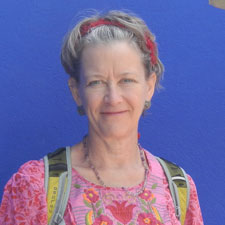Artist Statement
One might say that my work is built on a series of carefully interwoven incongruities. Both in formal reference and in simple materiality, my pieces gain conceptual density and visual richness by context and juxtaposition.
My formal vocabulary has grown directly out of an abiding interest in the myriad visual languages that inform ceramics – both as historical record and as evolutionary discourse. I feel very comfortable moving between the idiomatic subtleties of many times and places because my goal in creating ceramic work is to bridge the divide between the studied elegance of fine china and the robust naiveté of simple, vernacular pottery.
For me, this bridge exists in the concrete realities of a medium whose roots in practical utility have served to expand, rather than limit, its ability to communicate universal themes in aesthetic terms.
I’ve been inspired by work as varied as the medieval folk traditions of Europe and the Middle East, and the charm of 19th century Staffordshire porcelain. I’ve drawn from them all, in decorative motif and in sheer physicality. The qualities that determine each choice are purely personal, and reflect my love of the visceral realities of the materials themselves. These choices have, over time, coalesced into a very specific and personal formal idiom, perfectly suited to the larger conceptual implications of my work as a whole.
The specific visual syntax that forms such a central part of my work is derived primarily from my own, very personal, experience of nature as an intimate part of daily life. This imagery has become increasingly refined and specific in recent years, as I’ve spent my summers living in very simple (one might even say, “primitive”) conditions in rural Vermont. This has allowed me to produce more direct, less mediated interpretations of natural forms, and integrate this new knowledge back into the historically determined iconography of traditional ceramics that have informed my work for many years.
The life cycles of plants and insects, the habits and habitats of animals and birds - all these become interconnected elements in a richly nuanced symbology that reflects the layered complexity of the natural environment itself.
The idea of layering is directly observable in the manner in which the 2 dimensional surfaces of my ceramic pieces elaborate upon, and sometimes contradict, their 3 dimension forms. This orchestrated juxtaposition of literal and illusionistic elements is very important to the inner logic that activates my work, and acts as a shifting template of the image/object dialectic that I feel is one of the most fascinating properties of ceramic art.
Perhaps this idea is most notably apparent in my choice of decorative colorants, particularly gold luster. This is a material with a marvelously tangible physical presence. Because of this quality, and its distinct reflectivity as well, gold functions very differently from the other forms of decorative material that I use: painted glazes and glass enamel.
The sheer weight and physicality of gold allows it to exist in front of, or outside of, the 3 dimensional surface onto which it is applied, thus causing the form beneath to seem to dissolve.
Besides their inherent formal beauty, the decorative materials I use act as very conscious referents to specific art historical epochs, and to the socio-political realities of our world, both past and present.
While gold and refined surfaces refer clearly to the traditions of fine porcelain production, other materials and techniques refer to more homely, less rarified traditions. The mark of a brush, intentionally retained, or the roughness of a surface that reveals the integrity of the material – formal choices like these recollect the bold, unaffected pottery handmade for daily use in pre-industrial societies. It’s the energy and directness of these pieces that I admire, and the clarity with which decoration and surface reflect the realities of hand production, and the simple rituals of domestic life.
Because the imagery that animates my work comes so directly from the intimate experience of nature, I’m very much interested in the historical uses of plant and animal forms in ceramic decoration. Both naïve and sophisticated traditions employ such motifs, of course, though stylistic conventions and degrees of mediating elaboration vary hugely from place to place and method to method.
Over time I’ve developed a non-hierarchical vocabulary of imagistic inventions that embrace the salient features of many stylistic languages. In the midst of these I’ve found that it is my profound and personal immersion in nature that allows me to discover oddly familiar truths in each. I believe that I’m able to move between these languages easily, and without affectation, because the visceral realities of the natural world exist for all of us equally and may, if one is able to embrace them fully, serve as an interpretive bridge of great depth and resonance.
-- Liz Quackenbush











